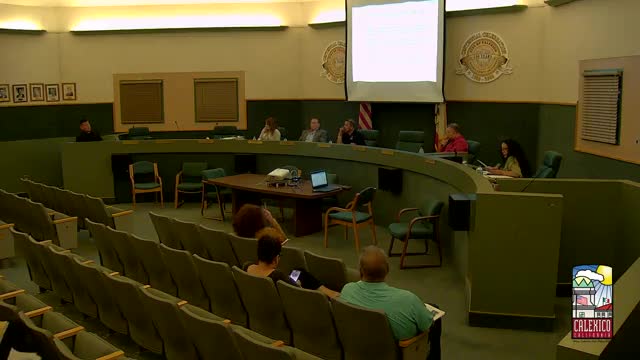Emergency services face funding crisis amid rising call volume
June 20, 2024 | Calexico City, Imperial County, California

This article was created by AI summarizing key points discussed. AI makes mistakes, so for full details and context, please refer to the video of the full meeting. Please report any errors so we can fix them. Report an error »

In a recent government meeting, officials discussed the challenges faced by emergency medical services (EMS) in responding to frequent calls, particularly those related to low blood sugar incidents. It was highlighted that EMS responds to approximately 900 to 1,000 calls annually for low blood sugar, often treating patients with IV dextrose. However, many patients, once stabilized, choose to leave against medical advice (AMA), resulting in no reimbursement for the services provided.
The discussion underscored the financial strain on EMS resources, as they are utilizing equipment and personnel without receiving compensation. Officials emphasized the need for a study to analyze the frequency of these AMA cases and explore potential solutions, including collaboration with local medical facilities to address the underlying issues.
One suggestion was to implement a fee structure for certain services, which could help recuperate costs and alleviate the burden on EMS. Additionally, there was a call for better engagement with insurance providers, such as Medicare and Medi-Cal, to ensure that services rendered are billed appropriately, potentially generating revenue for the city.
The meeting also touched on the importance of public education to reduce unnecessary calls for assistance, which often stem from non-emergency situations. Officials acknowledged that while the services provided are crucial, there is a pressing need to balance community support with financial sustainability for EMS operations.
The discussion underscored the financial strain on EMS resources, as they are utilizing equipment and personnel without receiving compensation. Officials emphasized the need for a study to analyze the frequency of these AMA cases and explore potential solutions, including collaboration with local medical facilities to address the underlying issues.
One suggestion was to implement a fee structure for certain services, which could help recuperate costs and alleviate the burden on EMS. Additionally, there was a call for better engagement with insurance providers, such as Medicare and Medi-Cal, to ensure that services rendered are billed appropriately, potentially generating revenue for the city.
The meeting also touched on the importance of public education to reduce unnecessary calls for assistance, which often stem from non-emergency situations. Officials acknowledged that while the services provided are crucial, there is a pressing need to balance community support with financial sustainability for EMS operations.
View full meeting
This article is based on a recent meeting—watch the full video and explore the complete transcript for deeper insights into the discussion.
View full meeting
